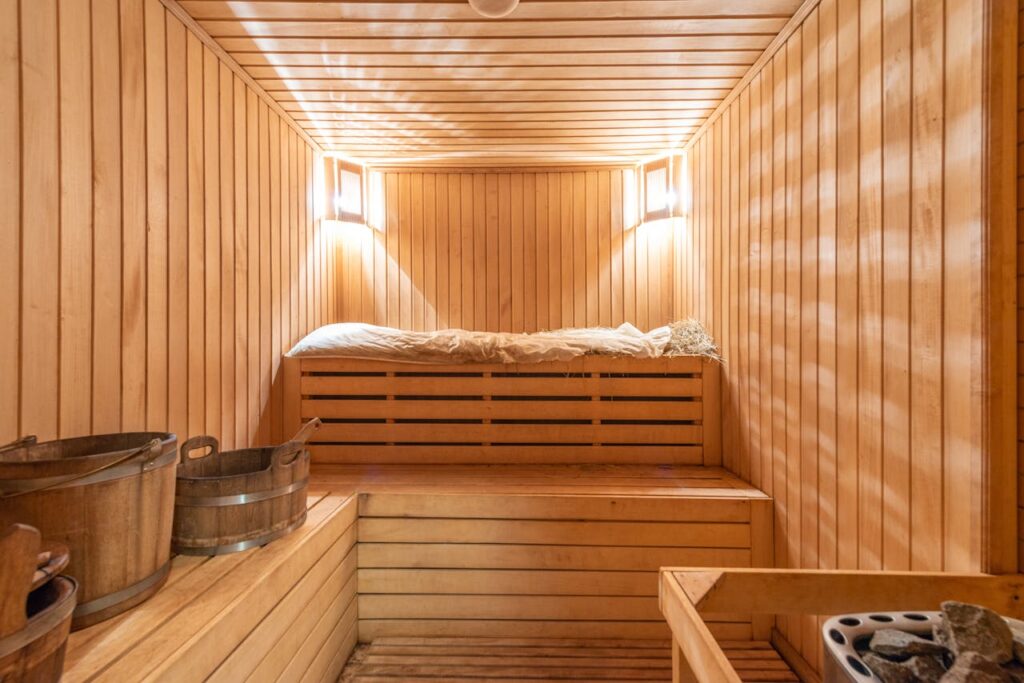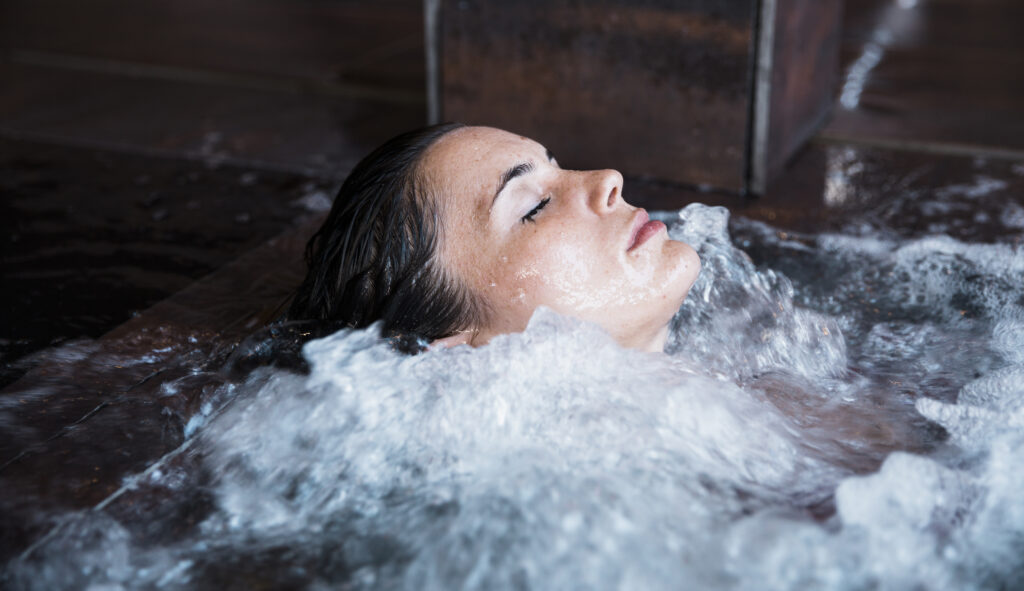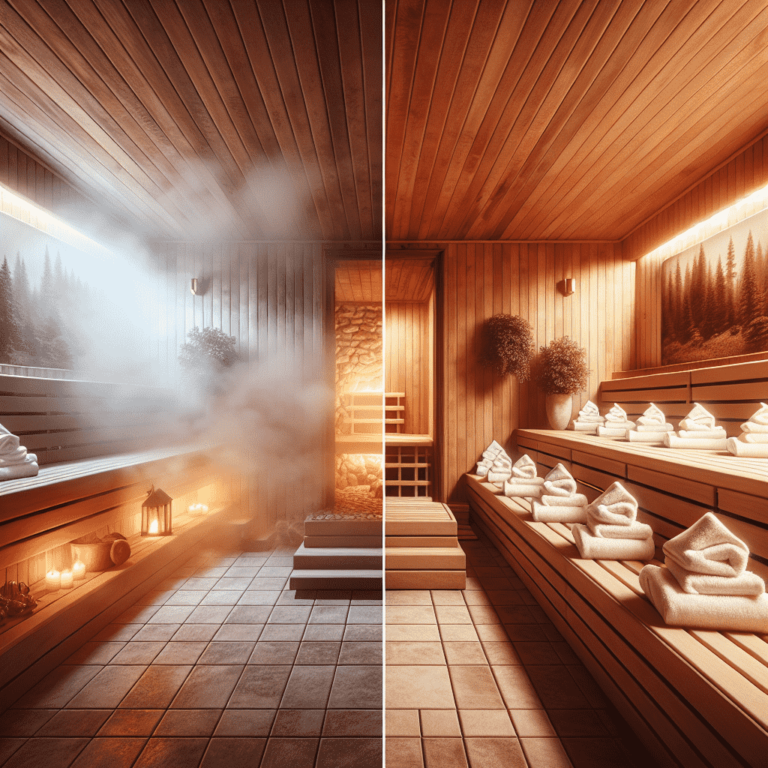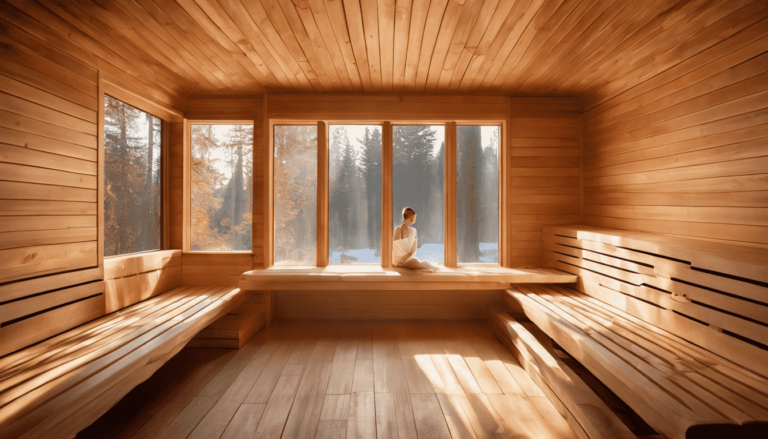Key Highlights
- Try the refreshing benefits of sauna cold plunge switching between hot sauna sessions and cold plunges.
- This practice, from ancient traditions, provides many health benefits.
- It can help improve your circulation, strengthen your immune system, aid muscle recovery, and lower stress. The mix of heat and cold therapy can bring new energy to your mind and body.
- Find out the best order for your sauna and cold plunge routine. Learn how to add this strong practice into your daily life.
- Look into the proven benefits and possible risks to make smart choices about adding sauna and cold plunge practices to your wellness routine.
Introduction
In our world where wellness is very important, many people love the mix of energizing sauna sessions and refreshing cold plunge therapy. This old practice has many health benefits. It works by switching between hot water and cold to help your body feel better. This guide will look at the many good things that come from adding sauna and cold plunge routines to your wellness path.
Understanding the Sauna and Cold Plunge Routine
The sauna and cold plunge routine is easy to understand. It is based on using two different temperatures. First, you spend time in a warm sauna. This helps your body warm up and sweat. The heat helps you relax, improves blood flow, and gets your body ready for what comes next.
Next, you quickly jump into cold water. This can be an ice bath or a cold shower. This quick change in temperature surprises your body. It triggers many responses that can give you health benefits.

The Science Behind Heat and Cold Therapy
Heat therapy, like using a sauna, makes blood vessels open up. This increases blood flow in the body. As blood moves faster, it carries more oxygen and nutrients to muscles and organs. This helps with healing and relaxation. The heat can also boost the immune system by increasing the number of white blood cells that fight off infections. Sauna use also induces heat shock proteins and the production of human growth hormone while releasing many other hormones, promoting faster muscle repair and overall health benefits.
In contrast, cold therapy makes blood vessels tighten. This can reduce swelling and inflammation. Tightening the blood vessels also helps get rid of waste and toxins. When your body warms up again, blood flow increases, this brings oxygen-rich blood to muscles and tissues for better recovery.
Switching between heat and cold creates a pumping effect in blood vessels. This helps with blood circulation and gets rid of waste. This is important for keeping the immune system healthy.
Historical Use and Modern Popularity in the United States
Sauna use has been an important part of Nordic cultures for many years, going back to ancient times. The Finnish people especially have taken on this practice. They see it as a way to clean and refresh themselves. Traditionally, saunas were small wooden buildings where people would wash and spend time together.
Cold plunging, which often means jumping into icy lakes or rivers, pairs well with sauna use in these chilly areas. This practice called the “Nordic Cycle,” involves switching between hot and cold to help blood flow and improve health.
Nowadays, sauna use and cold plunging are popular well beyond Scandinavia. They are gaining attention in the United States and other countries too. As more studies show their benefits, this age-old practice is attracting new fans. These people want to boost their health and practice a well-rounded approach to wellness.
Preparing for Your First Sauna and Cold Plunge Experience
Starting your first sauna and cold plunge experience can be exciting and refreshing. To have a safe and fun time, it’s important to take it easy and pay attention to how your body feels. Before going into the sauna, remember to drink a good amount of water to stay hydrated.
You might also want to check with your doctor to make sure this practice is right for your health conditions. By easing your body into the temperature changes and focusing on safety, you can make the most of this age-old health practice.

Essential Equipment and Resources Needed
You need the right equipment to enjoy the benefits of sauna and cold plunge therapy. For sauna sessions, you can choose a traditional wood-burning sauna, an infrared sauna, or a portable sauna if you have limited space. It’s helpful to have a timer to track your sessions. Don’t forget a comfortable robe and towels to relax before and after your sessions.
For cold exposure, you can use an ice bath or a cold shower. If you decide to use an ice bath, get a large tub made for this. You can buy bags of ice or get a portable ice maker for ease. A thermometer can be good to check the water temperature, making sure it’s safe for your level of experience.
Always keep safety first. Have someone nearby when using a sauna or doing cold exposure. Start with shorter durations and gradually increase the time as your body gets used to it.
Safety Measures and Health Considerations
Before you start using a sauna or a cold plunge, it’s important to stay safe and think about your health. If you have any health issues like high blood pressure or heart disease, or if you are pregnant, talk to your doctor first.
Also, make sure to stay away from alcohol or heavy meals before or after using the sauna or cold plunge. These can put extra pressure on your body and cause problems.
Always listen to what your body tells you. Increase the time and intensity of your sessions slowly. If you feel dizzy, lightheaded, or unwell, stop right away and get medical help if needed.
Is it better to use the ice bath before or after the sauna?
The long-standing question about whether to use the ice bath before or after the sauna is common in contrast therapy. There is no clear answer and everyone has different likes. Many experts say to start with the sauna and finish with the ice bath. This order works well with how our bodies respond to heat and cold.
Sauna sessions raise body temperature and heart rate, which helps you relax. After this, a cold immersion makes blood vessels tighten. It can reduce swelling and give a refreshing shock to your body. Finishing with the cold immersion can make you feel lively and full of energy. In the end, the best way is to try both methods and see which one feels best for you.
Step-by-Step Guide to Integrating Sauna and Cold Plunge into Your Routine
Integrating sauna and cold plunge into your wellness routine is a journey. You should take it slowly and pay attention to your body. It’s important to know your limits, and you can slowly increase how long and hard you go with your sessions.
Here are some steps to help beginners enjoy this practice and get the great health benefits it offers.
Step 1: Gradual Introduction to Sauna Sessions
For people just starting to use a sauna, it is important to get used to the heat slowly. Begin with short sessions of 5 to 10 minutes. You can increase the time as your body becomes more comfortable with the heat.
Here are some extra tips for beginners:
- Hydrate: Drink lots of water before, during, and after your sauna session. This helps replace the fluids you lose from sweating.
- Start low and slow: Start with a lower temperature at first. You can raise the heat gradually as your body adjusts.
- Listen to your body: If you feel dizzy, lightheaded, or uncomfortable, leave the sauna right away.
Using the sauna regularly can help you build your tolerance. This way, you can enjoy longer and more intense sessions in the future.
Step 2: Timing Your Cold Plunge for Optimal Benefits
The timing of your cold plunge and sauna session can really affect the benefits you get. While your personal choice matters, many who support cold plunge therapy suggest you should go for the plunge right after you leave the sauna.
This way, you get the most effect from the hot and cold changes. It can help your blood vessels and might even improve your immune function. When you jump into cold water, your core body temperature drops fast. This leads to vasoconstriction, which may help reduce inflammation and increase circulation as your body warms up again.
If you are new to cold exposure, it’s important to start slow. Try cold plunges of 10 to 30 seconds at first. You can then slowly increase the time as you get used to it.
Step 3: Alternating Between Heat and Cold
The true benefit of using the sauna and cold plunge routine comes from switching between heat and cold. This method, known as contrast therapy, uses the body’s natural reactions to temperature changes. It provides many health benefits.
Here’s a simple way to alternate between heat therapy and cold therapy:
- Sauna session: Stay in the sauna for 10-20 minutes. Make sure the heat feels good but not too much.
- Cold plunge: After leaving the sauna, get into cold water for 1-2 minutes.
- Repeat: Keep going back and forth between the sauna and cold plunge 2-3 times. Change how long you stay in each one based on what you like and can handle.
It’s important to stay consistent and gradually increase your time in each phase to enjoy the long-term health benefits of contrast therapy.
Step 4: Monitoring Your Body’s Response
Paying attention to how your body reacts during and after sauna and cold plunge sessions is very important. Your body will give you feedback to help you change the routine to fit your needs.
Keep an eye on your heart rate, especially in the first few sessions. The sauna heat may raise your heart rate, while the cold plunge usually lowers it. Notice how your nervous system responds to the temperature changes.
Some people feel relaxed in the sauna, while others feel energized. Cold exposure can also make you feel very alert or very calm. Understand how you react and change your routine based on that.
Step 5: Establishing a Consistent Routine
While the idea of enjoying a hot sauna followed by a refreshing cold plunge sounds great, the secret to getting the most out of this practice is to be consistent. Making it a regular habit helps your body handle the temperature changes better, and incorporating a hot tub into your routine can also provide additional health benefits. This way, you will gain more health benefits and create a well-rounded sauna and cold plunge experience.
Whether you go for a sauna and cold plunge once a week or make it a daily event, try to keep it regular. Over time, you may see good changes in many areas of your well-being. This could include lower stress levels, better sleep, more energy, and improved blood flow.
Sticking to a routine helps your body get the full benefits of this strong practice. It can lead to big and lasting changes in your overall health.
Benefits of sauna cold plunge
Using sauna sessions along with cold plunges creates a strong effect. This way, you can boost the benefits of a sauna cold plunge. The hot and cold temperatures work together to give your body a workout. This helps improve blood flow and activates different systems in your body.
This mix can help decrease muscle soreness, strengthen the immune system, improve sleep, and encourage relaxation and clearer thinking.
Boosting Immune Function and Circulation
The sauna and cold plunge together really help the immune system. The heat from the sauna can make the body react like it has a mild fever. This leads to making more white blood cells, which are important for fighting infections.
When you are exposed to cold temperatures, it can boost your immune function. It increases the production of lymphocytes, another kind of white blood cell that helps the body fight off illness. Switching between hot and cold causes the blood vessels to contract and relax. This action improves blood flow and lymphatic circulation.
Better lymphatic circulation helps your body get rid of toxins and waste, which makes the immune system stronger.
Enhancing Muscle Recovery and Reducing Inflammation
Athletes and fitness fans know that using saunas and cold plunges can help muscles recover faster and lessen soreness after workouts. The sauna’s heat relaxes muscles, increases blood flow to tissues, and decreases muscle tension.
Cold plunges work differently. They shrink blood vessels, which helps lower inflammation and swelling in muscles and joints. This drop in inflammation can ease pain and help healing after intense exercise. Also, when you warm up again after a cold plunge, the increased blood flow helps remove waste products, which supports muscle recovery.
Using heat and cold together gives a well-rounded way to tackle muscle soreness and inflammation. This makes sauna and cold plunge therapy important for athletes and anyone wanting to improve their recovery.
Improving Mental Health and Stress Relief
The benefits of sauna cold plunge are good for both your body and mind. When you use the sauna, the heat helps you relax and increase energy levels. It raises the levels of endorphins in your body, which can make you feel happier. It also lowers cortisol, the hormone that causes stress, giving you a calm feeling. In addition, regular sauna sessions can also improve mental health and provide stress relief by triggering the release of positive hormones and promoting relaxation.
At first, cold plunges might feel uncomfortable. However, they can make your sympathetic nervous system active. This starts the release of adrenaline and other hormones. After that, as your body warms up again, it helps you relax. Over time, this can make you stronger against stress.
Additionally, during cold exposure, many people practice deep breathing. This can activate the parasympathetic nervous system. It helps quiet the mind and creates a feeling of well-being.
Accelerating Weight Loss Efforts
While it’s not a quick solution for weight loss, using a sauna and cold plunge therapy can help you with weight management. The heat from the sauna makes your body temperature go up. This can raise your heart rate and metabolic rate, which is like doing moderate exercise.
When your metabolism increases, you can burn more calories. Cold exposure, especially with cold plunges, can activate brown adipose tissue (BAT). This type of fat helps burn calories to create heat.
More studies are needed to know the long-term effects of sauna and cold plunge therapy on weight loss. Still, the boost in metabolism and the activation of BAT may help those wanting to lose extra weight as part of a broader weight management plan.
Common Mistakes to Avoid for Beginners
For those just starting with sauna and cold plunge, it’s important to be careful and avoid common mistakes that can be bad for your health. One big mistake is staying in extreme temperatures for too long right away.
Begin with shorter sessions. Then, slowly increase how long and hard you go as your body gets used to it. It is also key to pay attention to what your body is telling you. Do not push yourself too hard, especially at first. Another mistake is not drinking enough water. Sauna use can make you sweat a lot, which means you lose fluids. So, make sure to drink enough water before, during, and after each session.
Overdoing the Duration or Intensity Too Soon
One important thing to remember when starting a sauna and cold plunge routine is to practice moderation. The benefits are real, but doing too much, especially when you are new, can lead to problems.
For sauna sessions, try to keep them under 20 minutes. This is especially important for beginners who are getting used to heat exposure. Staying in high temperatures for too long can cause dehydration, dizziness, or even heat exhaustion. The same goes for cold exposure; staying in cold too long can also not be good for you.
At first, limit your cold plunges to one or two minutes. As your body gets used to it, you can slowly increase the time. Pushing too hard too quickly can put stress on your heart, possibly causing a rise in blood pressure or an irregular heartbeat.
Ignoring Body Signals and Safety Precautions
Your body can tell you when it needs something, so it’s important to listen to it during sauna and cold plunge therapy. If you feel dizzy, lightheaded, nauseous, or notice a fast heartbeat, these are signs your body is stressed and needs a break.
Safety is very important. Always use a sauna or take a cold plunge with someone else. Fainting can happen, especially if you are a beginner. Having someone close by can help if you need it. If you have health conditions like high blood pressure, or heart issues, or are pregnant, talk to your healthcare provider before starting this therapy.
Conclusion
The benefits of sauna cold plunge are many. These can help your immune system and assist in muscle recovery. They also promote better mental health. To get the most out of these therapies, take it slow and pay attention to how your body feels. It’s important to stay safe and talk to a healthcare professional if you have any concerns. Explore the refreshing benefits of sauna and cold plunge therapy for a full wellness experience. Enjoy this practice carefully to boost your health and energy. Begin your path to better well-being today!
Frequently Asked Questions
How Often Should Beginners Use Sauna and Cold Plunge?
For beginners, it is a good idea to start with 1 to 2 sessions each week. Your body will get used to this schedule. After some time, you can increase to 2 or 3 sessions each week. Doing this will help you get the health benefits of regular sauna use and cold plunge therapy.
Can Sauna and Cold Plunge Help with Chronic Pain?
The combination of heat therapy and cold therapy can help relieve chronic pain for some people, even though it is not a cure. The heat from the sauna helps to relax muscles. At the same time, the cold plunge can reduce inflammation and improve blood flow. This might help to ease discomfort.
Are There Any Contraindications for Sauna and Cold Plunge?
Some health issues can make sauna use and cold exposure unsafe. These include high blood pressure, heart disease, and pregnancy. It’s a good idea to talk to your doctor if you are worried about these risks before you start.
What is the Best Time of Day for Sauna and Cold Plunge?
The best time for sauna sessions and cold plunge therapy depends on what you like and how your body feels. Some people enjoy the morning for a burst of energy. Others find that the evening is better for relaxing.
How Long Does It Take to See Benefits from Sauna and Cold Plunge?
The time it takes to see health benefits can be different for everyone. These benefits may include better immune function, quicker muscle recovery, and lower stress levels. However, if you stick to a regular routine, you may start to notice changes in just a few weeks.
Can Sauna and Cold Plunge Improve Skin Health?
Yes, going to the sauna and using cold water can help your skin. They boost blood flow and help remove toxins. This can lead to clearer and brighter skin.


